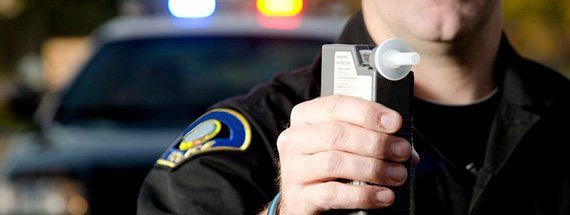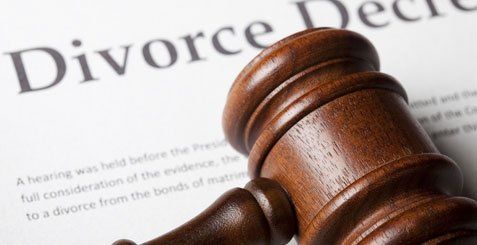By Jarvis, McArthur & Williams
•
February 8, 2019
The Insurance Negotiation Process If you file a personal injury claim with an insurance company after an accident, you must be prepared to negotiate a settlement with the claim’s adjuster. The attorney’s at Jarvis, McArthur & Williams have extensive experience negotiating with insurance claims adjusters. Negotiating a settlement is part of the personal injury claims process, which begins when you report your injury to the insurance company and file a claim. If you decide to accept the insurance company’s settlement offer, the personal injury claims process will end at that point with the person that injured you or your insurance company if you are making a uninsured or underinsured motorist claim. In the alternative—and in consultation with an experienced attorney at Jarvis, McArthur & Williams—you may reject the insurance company’s offer to settle and pursue a lawsuit. Please keep in mind that many times individuals do not understand that settling with an insurance company does not relieve the injured party from their obligation to satisfy any insurance liens that exist as a result of settling a case. The best course of action is to always contact one of the experienced personal injury lawyers at Jarvis, McArthur & Williams to seek advice. This page provides basic information about the personal injury insurance settlement negotiation process. It may not apply to you, and is not a substitute for consulting with an experienced personal injury lawyer at Jarvis, McArthur &Williams. Although it may be possible to secure a favorable insurance settlement on your own, hiring a personal injury lawyer offers you the best chance at receiving the maximum amount of compensation for your injuries and other losses after an accident. The Personal Injury Claim Process The personal injury claim process begins when you report your injury and initiate a claim with the at-fault party’s insurance company (or with your own insurance company in the event of a first party claim, such as when the at fault driver did not have insurance or had inadequate insurance—known as underinsured or uninsured motorist coverag), and ends when you decide to accept or reject the final settlement offer from the insurance company’s claims adjuster. It is helpful to think of negotiation as part of the entire personal injury claim process. At each step, you should be advocating for the highest possible settlement. The claims adjuster will be trying to diminish your claim in an effort to pay you as little as possible. You should become familiar with the basic negotiation steps discussed below. The more familiar you are with the personal injury claim process, the better prepared you will be to negotiate a settlement that fully accounts for your injuries and other losses. Steps to Negotiating a Personal Injury Settlement Insurance companies train their adjusters on how to negotiate personal injury claims. The insurance companies always treat individuals representing themselves differently than they treat experienced personal injury lawyers. As such, you should contact the experienced attorneys at Jarvis, McArthur & Williams. Although all insurance companies handle personal injury claims differently, the settlement negotiation process will look something like this. 1.You file a personal injury claim with the insurance company The first step in your personal injury claim is notifying the at-fault party’s insurance company about your accident and injuries or alternatively your insurance company if the person responsible for your personal injury does not have insurance. You do this by filing a claim with the insurance company. Most insurance companies allow you to file a claim over the phone or by filling out an online form. You should file a claim as soon as possible after an accident, as many insurance companies require you to do so within 24 hours after an accident. Filing a claim effectively begins the settlement negotiation process. 2.You receive a reservation of rights letter from the insurance company In response to filing a personal injury claim with the at-fault party’s insurance company, you will receive a “reservation of rights” letter from the insurance company. The reservation of rights letter will indicate that the insurance company plans to investigate your claim and will discuss it with you, but by doing so they are not admitting to any liability for your injuries on behalf of their insured (the at-fault party). It is important to fully understand the implications of the reservation of rights letter. If you have questions about the letter, you should contact an attorney at Jarvis, McArthur & Williams. 3.You send a demand letter to the insurance company As soon as you are at an end of medical care in your personal injury case, you can send a demand letter to the at-fault party’s insurance company. Your demand letter should lay out the basic facts of what happened in your accident and how badly you were hurt. It should also itemize your damages, including medical bills, out-of-pocket expenses, and lost income. These damages are known as your “special damages” (or “specials”). Once you have calculated the total amount of your special damages, you will multiply this amount by a number to reflect your pain and suffering. This figure is otherwise known as your “general damages.” The combined amount of your special damages and general damages will be your total settlement demand. 4.The claims adjuster will respond to your demand letter After you send a demand letter to the at-fault party’s insurance company, you will receive a response from the insurance claims adjuster. The claims adjuster may call you on the phone to discuss his or her initial offer, or send you a written letter containing an initial settlement offer. At this point, the real negotiations begin. The claims adjuster will try to convince you that your claim is worth much less than your total settlement demand. The claims adjuster may try to say that your special damages are far too high for the type of accident you were involved in. He or she may try to pressure you into accepting a low offer right away by claiming it is a one-time offer. You may be told that your settlement demand exceeds his or her “authority,” which refers to the maximum amount the claims adjuster’s supervisor will allow your claim to settle for. Do not be alarmed by a low settlement offer. You should never accept a settlement offer that does not fairly account for your injuries and other losses. By making a lowball offer, the claims adjuster is testing you to see if you are impatient enough to accept the initial offer. The claims adjuster wants to see if you really understand how the personal injury claim settlement process works, and just how far you will go secure compensation for your injuries. In some rare cases, the claims adjuster will make a fair initial settlement offer. But typically, the next step in the negotiation process is to reject the claims adjuster’s initial offer and make a counteroffer. The claims adjuster will treat individuals representing themselves differently than an experienced attorney. The personal injury attorneys at Jarvis, McArthur &Williams have a combined 85 years negotiating with insurance claims adjusters. 5.You reject the claims adjuster’s initial offer and make a counteroffer If the claims adjuster did not make a fair initial offer, you should reject the offer and make a counteroffer. You do this by writing a letter to the claims adjuster stating that you cannot accept his or her offer. Tell him or her why you do not agree with the initial offer. Reiterate how badly you were injured, and remind the claims adjuster that your medical treatment was absolutely necessary. In making a counteroffer, you should reduce your initial settlement demand, but not by too much. This will show that you are willing to compromise, moving the settlement negotiations ahead. 6.You and the claims adjuster continue to negotiate Once you have made a counteroffer, negotiations will resume. The claims adjuster may not respond to your counteroffer right away. You must be patient and wait until the claims adjuster makes another offer. If you call the claims adjuster before he or she makes another offer, you will ultimately harm your chances at receiving a fair settlement. The negotiation process might involve several more offers and counteroffers between you and the claims adjuster. You must continue to defend your position, pointing at every opportunity to the reliable evidence of your injuries and other losses that you included in your demand letter. Hopefully, you and the claims adjuster will arrive at a settlement figure that fairly reflects the severity of your injuries. 7.You accept or reject the final settlement offer If you and the claims adjuster have not yet reached a settlement agreement, the claims adjuster may make a final settlement offer. At this point, you must decide whether the settlement offer is acceptable. If you believe that the claims adjuster’s final settlement offer is acceptable, there are certain steps you must take in order to accept the offer. If the claims adjuster’s final settlement offer does not fully account for your injuries and other losses, you may need to consider filing a personal injury lawsuit. Because filing a personal injury lawsuit requires special skill and training, as well as a thorough knowledge of the law and legal system, you should not do so without the assistance of a qualified personal injury lawyer at Jarvis, McArthur &Williams. Settlement Negotiation Tips In order to negotiate the best possible settlement, you must: BE PREPARED. You should be as prepared for the personal injury claim process as possible. Familiarize yourself with the steps involved in negotiating a settlement, and gather as much credible evidence of your injuries and other losses as possible. Being prepared will help you remain confident, calm, and collected throughout the settlement negotiation process. BE PATIENT. Do not jump at the first settlement offer that comes your way. You must stay patient throughout the entire settlement negotiation process. Impatient personal injury claimants often settle their claims for much less than they are actually worth. Securing the maximum possible settlement is worth the wait. BE PERSISTENT. Do not allow settlement negotiations to come to a standstill. You must be persistent in moving your claim forward. While you should never rush the settlement process, be sure to respond to requests from the claims adjuster as quickly as possible. Be diligent about following up with the claims adjuster if necessary. Disclaimer: Information provided on this site is NOT formal legal advice. It is generic legal information. Under no circumstances should the information on this site be relied upon when deciding the proper course of a legal action. Always get a formal case evaluation from a licensed attorney if you think you might have a personal injury lawsuit.








